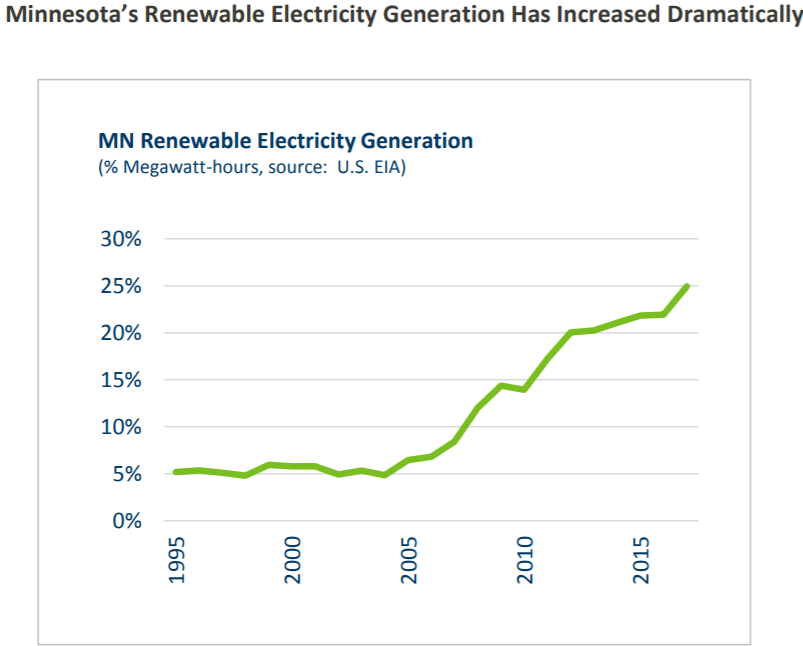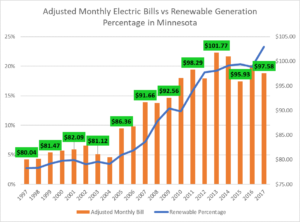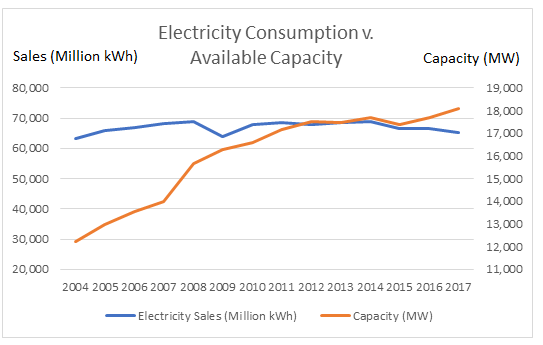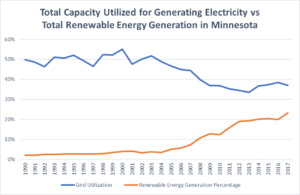Fresh Energy Is Still Intentionally Misleading Minnesotans on Energy Issues: Part Four – Why Energy Efficiency Won’t Save You Money
Fresh Energy, a renewable energy advocacy organization, continues to mislead Minnesotan’s on energy issues – and it appears they don’t appreciate our work explaining how wind and solar are driving up the cost of electricity in our state.
In their latest critique of American Experiment, Fresh Energy made multiple attempts to inaccurately portray our organization as not understanding how electric rates work, while arguing that wind and solar are the cheapest sources of electricity in our state and a boon to job creation.
Each of these claims is demonstrably false.
The article below is the fourth in a series of articles that will thoroughly explain how Fresh Energy continues to mislead Minnesotan’s on the cost of electricity in our state.
Why Energy Efficiency Won’t Save You Money
As crazy as this may sound, it’s absolutely true. Energy efficiency won’t save you money.
In Part Three of this series, we discussed how energy efficiency in Minnesota isn’t spectacular compared to other states in the country. Some states like Indiana have reduced their electricity consumption to a greater degree than Minnesota, even though they repealed their energy efficiency goals in 2014.
But even if Minnesota households had reduced their monthly electricity consumption by equal or greater amounts compared to other states, ratepayers still would not have saved any money. This is because utility companies simply raise the price, or rate, of electricity in order to compensate for selling less electricity.
In other words, The House (aka, monopoly utility companies) always wins. You, as the electricity consumers, always lose.
As we discussed in Part One of this series, electric bills are determined by electricity consumption and electricity rates:
Bills = Usage X Rates.
However, because most of Minnesota’s electricity is provided by government-approved monopoly utilities, electricity rates are determined by the “revenue requirement,” which is the annual amount of money utility companies need to cover their annual expenses, and projected electricity sales.
In this way:
Electricity Rates = Projected Revenue Requirement / Projected Sales.
This means that utility revenue requirements have a larger impact on monthly electric bills than electricity consumption, because if utilities lose revenue due to a decrease in electricity sales (i.e. energy efficiency) they will simply increase the electricity rates they charge you to make up the difference.
The House always wins, and you always lose.
Unfortunately, this is exactly what is happening in Minnesota to the detriment of families and businesses.
Minnesota ratepayers have largely succeeded in reducing their electricity consumption. EIA data show monthly household electricity consumption in Minnesota has decreased by 10 percent since 2007.
However, utilities and electricity regulators at the Minnesota Public Utilities Commission (PUC) have been letting ratepayers down by failing to keep the cost of electricity low.
Thanks to the more than $15 billion spent on wind, solar, and transmission lines, the revenue requirements for utility companies in Minnesota have increased substantially.
This is because renewable energy facilities are not being built to satisfy growing electricity demand (electricity demand has been essentially flat since 2007), but to satisfy ill-advised renewable energy mandates, which were passed in 2007. Interestingly, Xcel Energy was required to incorporate more renewables into its portfolio prior to the passage of the Next Generation Energy Act (NGEA).
Because renewable energy mandates have inflated the revenue requirement for utilities, monthly electric bills in Minnesota have increased by over 20 percent since 2004, in inflation-adjusted dollars.
The graph below from the Minnesota Department of Commerce shows renewable energy generation grew from approximately 4 percent in 2004, to approximately 25 percent in 2017.

It’s interesting to note that electric bills rose in unison with increasing levels of renewable energy on Minnesota’s electric grid, as the graph below shows.

As you can see, increasing electric bills in Minnesota are directly tied to rising levels of renewable energy on the system.
Minnesota households should have seen their monthly electric bills decrease in real terms because of coal plants depreciating and a growing population, which would have reduced the revenue requirement and spread the costs over a greater number of utility customers, but this didn’t happen because lawmakers, utilities, and regulators facilitated the irresponsible growth of expensive renewable energy sources.
Instead, ratepayers are being forced to foot the bill for new renewable energy facilities they essentially don’t need. Wind and solar simply cannot displace any existing dispatchable capacity because they need backup generation for when the wind isn’t blowing, and sun isn’t shining.
Even before Minnesota utilities started investing heavily in renewable energy facilities in 2004, our electrical grid already had enough generating capacity online to power two full Minnesota’s. Now, there’s nearly enough capacity online to power three Minnesota’s, despite total electricity consumption in the state only rising by 3 percent since 2004, as the graph below indicates.

This additional capacity is extremely expensive to maintain – even when it’s not being used. Unfortunately, there is a growing amount of idle capacity on the grid as we continue to add more intermittent renewable energy sources like wind and solar.
In 2004, the amount of available generating capacity utilized on the grid was nearly 50 percent. Now, only 37 percent is utilized, meaning that throughout a year, 63 percent of the power capacity online in Minnesota is sitting idle – or isn’t producing any electricity. This is extremely wasteful and inefficient.

Adding more wind, solar, and transmission lines has resulted in a situation where, because the majority of the additional expenses for utility companies are capital costs, and not fuel, ratepayers are forced to pay for more fixed expenses, meaning that utilities will always charge them the same amount, regardless of how much electricity they use.
If electricity sales decrease, thus leaving a utility company with a revenue deficiency, they will simply file a request for a rate increase with the PUC. This is exactly what Xcel Energy did in their last rate case, where the utility gave the following reason for increasing electricity rates on consumers:
“The Company’s revenue deficiency in 2016 reflects the costs of significant investments in our system, both in 2015 and over the next several years, as we continue to invest in carbon free energy sources and replace critical infrastructure while preparing for the future. These investments are resulting cleaner air, a better environment and a more resilient, flexible and reliable energy system that can deliver value to our customers for decades to come, but they require sufficient revenues to support them.”
As we said before, the house, or utility companies, always wins. You, as the electricity consumers, always lose.